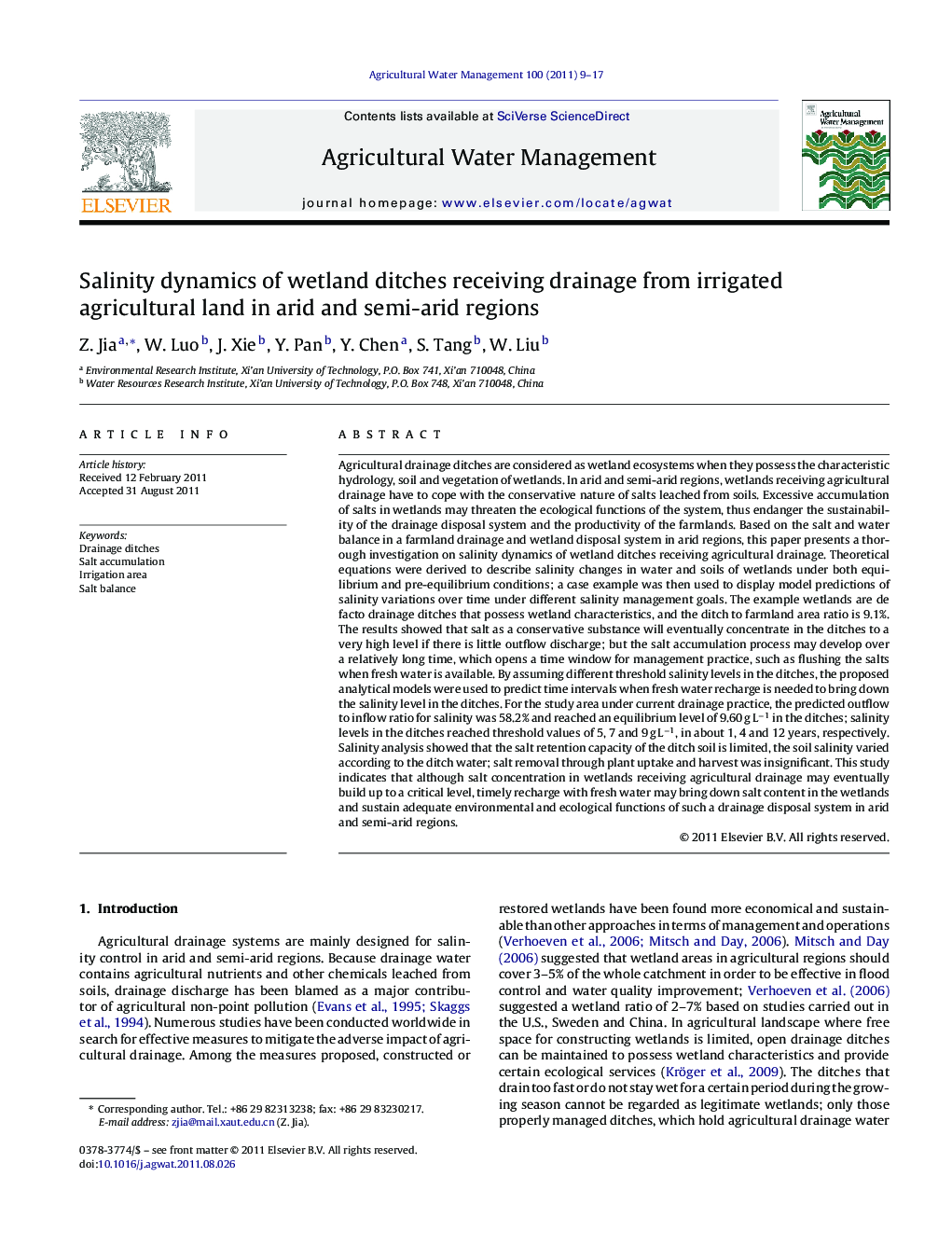| کد مقاله | کد نشریه | سال انتشار | مقاله انگلیسی | نسخه تمام متن |
|---|---|---|---|---|
| 4479265 | 1622977 | 2011 | 9 صفحه PDF | دانلود رایگان |

Agricultural drainage ditches are considered as wetland ecosystems when they possess the characteristic hydrology, soil and vegetation of wetlands. In arid and semi-arid regions, wetlands receiving agricultural drainage have to cope with the conservative nature of salts leached from soils. Excessive accumulation of salts in wetlands may threaten the ecological functions of the system, thus endanger the sustainability of the drainage disposal system and the productivity of the farmlands. Based on the salt and water balance in a farmland drainage and wetland disposal system in arid regions, this paper presents a thorough investigation on salinity dynamics of wetland ditches receiving agricultural drainage. Theoretical equations were derived to describe salinity changes in water and soils of wetlands under both equilibrium and pre-equilibrium conditions; a case example was then used to display model predictions of salinity variations over time under different salinity management goals. The example wetlands are de facto drainage ditches that possess wetland characteristics, and the ditch to farmland area ratio is 9.1%. The results showed that salt as a conservative substance will eventually concentrate in the ditches to a very high level if there is little outflow discharge; but the salt accumulation process may develop over a relatively long time, which opens a time window for management practice, such as flushing the salts when fresh water is available. By assuming different threshold salinity levels in the ditches, the proposed analytical models were used to predict time intervals when fresh water recharge is needed to bring down the salinity level in the ditches. For the study area under current drainage practice, the predicted outflow to inflow ratio for salinity was 58.2% and reached an equilibrium level of 9.60 g L−1 in the ditches; salinity levels in the ditches reached threshold values of 5, 7 and 9 g L−1, in about 1, 4 and 12 years, respectively. Salinity analysis showed that the salt retention capacity of the ditch soil is limited, the soil salinity varied according to the ditch water; salt removal through plant uptake and harvest was insignificant. This study indicates that although salt concentration in wetlands receiving agricultural drainage may eventually build up to a critical level, timely recharge with fresh water may bring down salt content in the wetlands and sustain adequate environmental and ecological functions of such a drainage disposal system in arid and semi-arid regions.
► Developed theoretical models for calculating salinity changes under both equilibrium and pre-equilibrium state in wetlands receiving farmland drainage in irrigated agricultural area.
► Used a case example to display model predictions of salt accumulation process in wetland ditches that serve as drainage outlet and receive fresh water recharge during non-irrigation season.
► Presented wetland salinity management options by assuming different threshold levels and calculating time intervals required for fresh water recharge to bring down the elevated salinity level based on model predictions.
► Demonstrated that the wetland soil has a limited capacity for salt retention, and salt removal through wetland plant uptake is negligible.
Journal: Agricultural Water Management - Volume 100, Issue 1, 15 November 2011, Pages 9–17